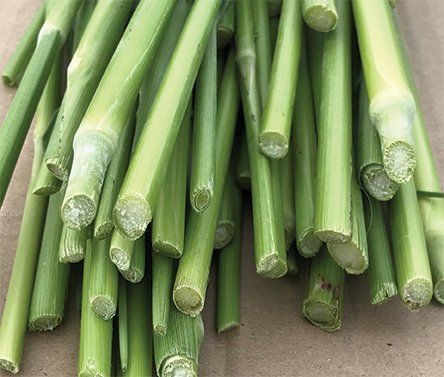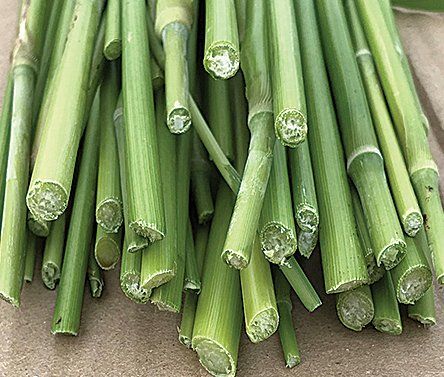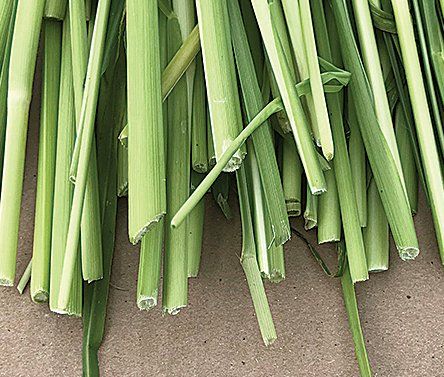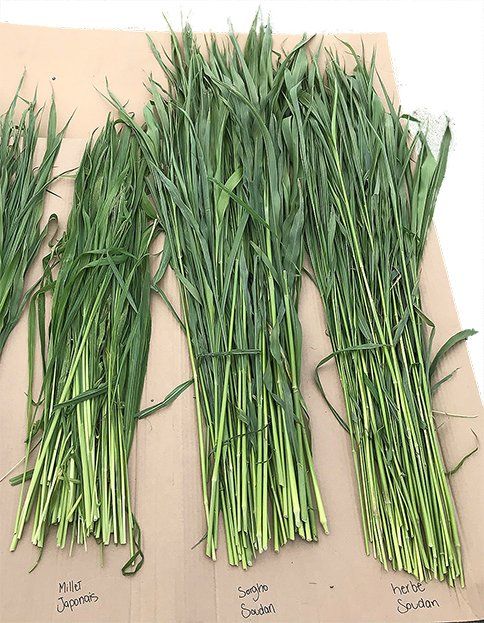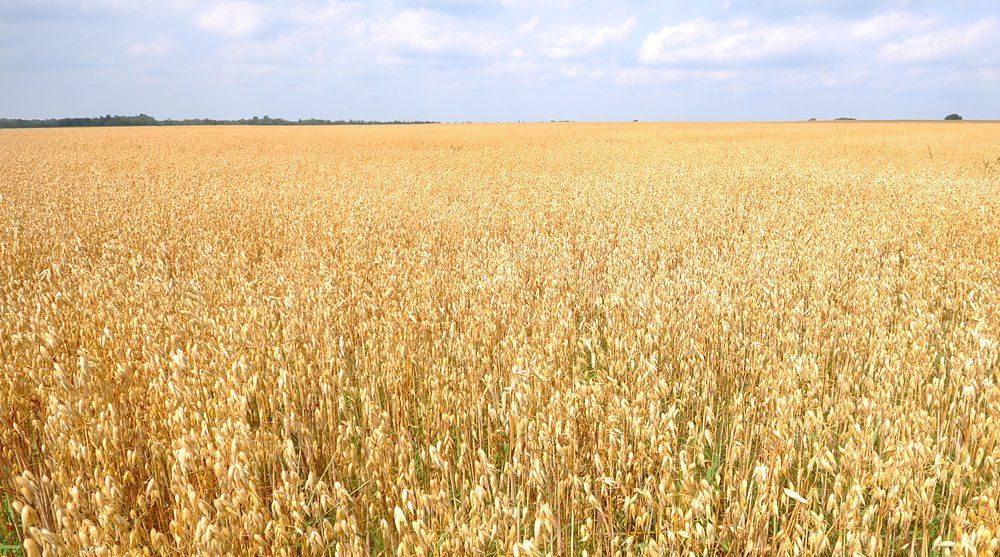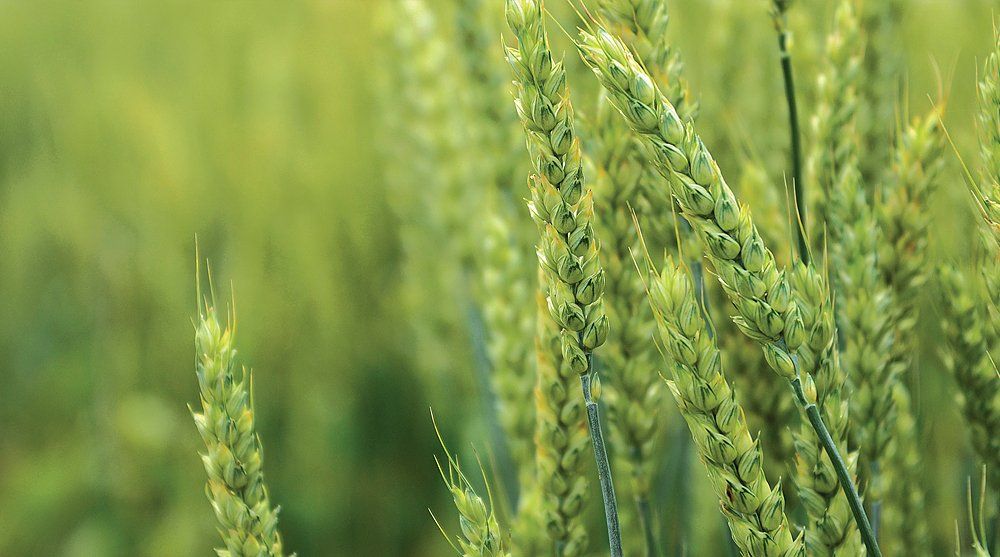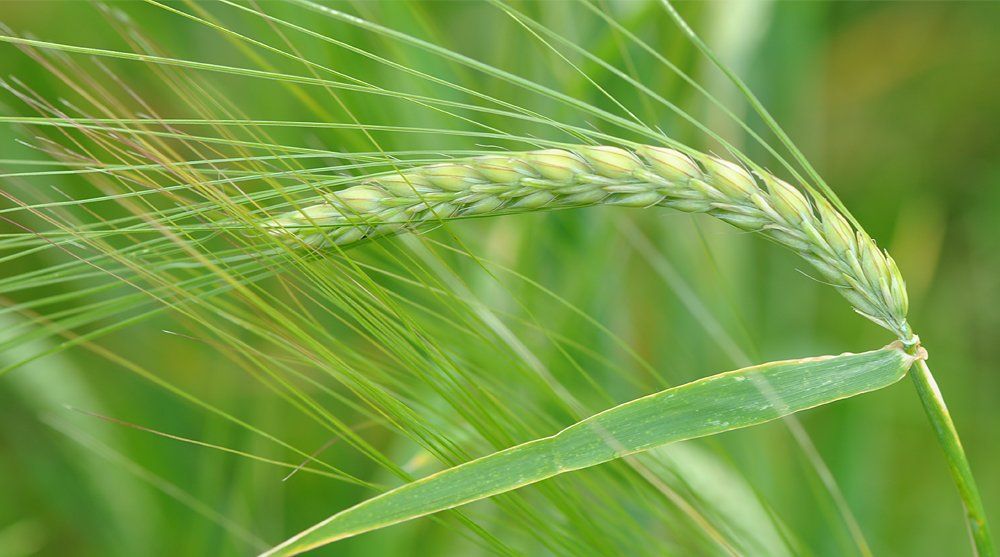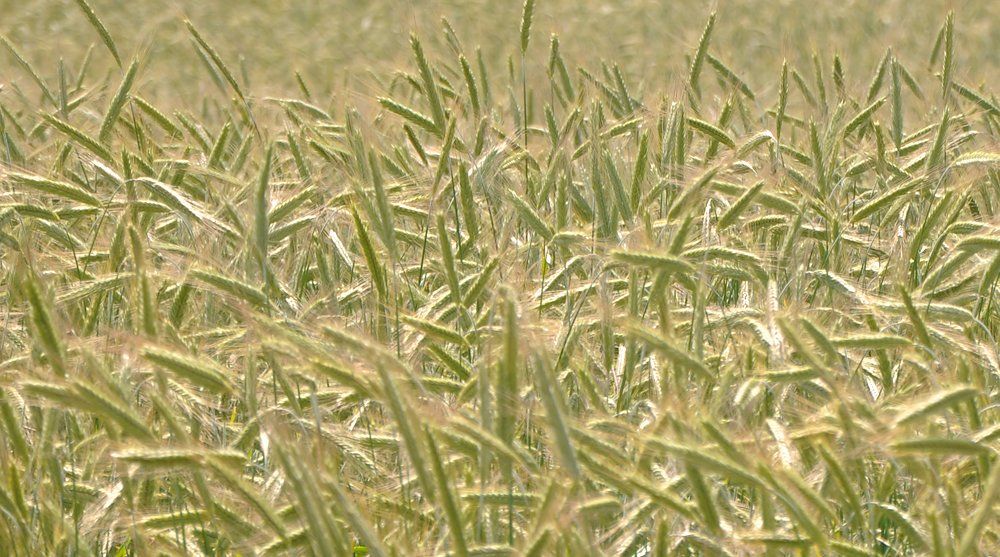EMERGENCY FORAGES
Emergency forages are of the C4 type like corn. These tropical annual grasses grow in semi-arid areas of the world. They require a minimum of water to germinate and can subsequently tolerate conditions of heat and drought whilst maintaining their growth. Although it is common practice, establishing feed sources with emergency forage is not a highly recommended practice. The compatibility gap between sowing dates and fertilization with legume can play a role in the persistence of the pasture.
Pure seeding rate: 40 to 50 lb/acre (44 to 55 kg/ha)
Seeding depth: ¾ inch to 1 ½ inch. (2 to 4 cm)
Soil temperature for sowing: 15.5 to 18 ºC
Pure seeding rate: 20 to 25 lb/acre (22 to 28 kg/ha)
Seeding depth: 3/4 to 1 ½ inch. (2 to 4 cm)
Soil temperature for sowing: 15.5 to 18 ºC
- Leave 6 to 7 inch. of stubble to to ensure regrowth
- Tolerates wetter soil
** These plants are sensitive to nitrate buildup. It is
recommended to split the nitrogen into 2 applications.
** They may also contain prussic acid (acid released into
the air during fermentation).
The most risky conditions for prussic acid are:
- Immature plants
- Plants that have suffered from drought or frost
In order to avoid the risk of poisoning, it is recommended:
- To harvest only when the plants reach a height of 18 to 24 inch. (45 to 60 cm) ;
- wait 3 to 5 days after a killing frost before harvesting or;
- wait for complete fermentation before serving it to livestock.





